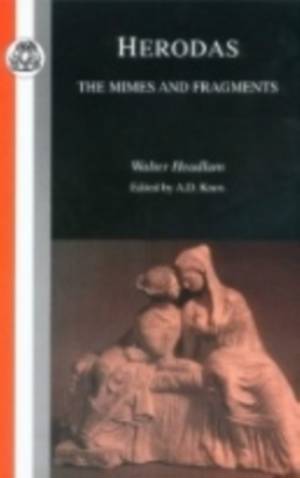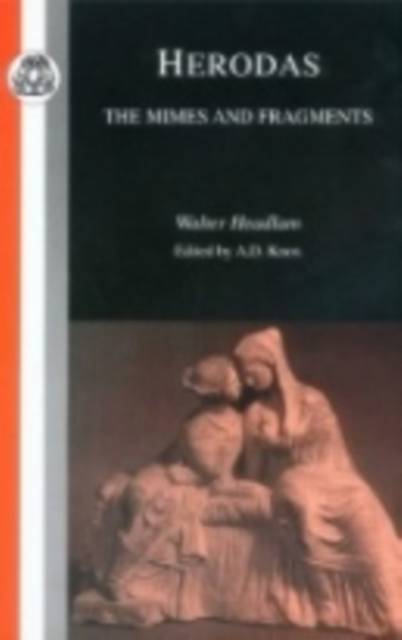
- Afhalen na 1 uur in een winkel met voorraad
- Gratis thuislevering in België vanaf € 30
- Ruim aanbod met 7 miljoen producten
- Afhalen na 1 uur in een winkel met voorraad
- Gratis thuislevering in België vanaf € 30
- Ruim aanbod met 7 miljoen producten
Zoeken
€ 88,45
+ 176 punten
Omschrijving
The surviving short mimes of Hero(n)das share much of their aims and background with the Alexandrian poetry of the first half of the third century BC, especially that of Callimachus and Theocritus. They are at once acutely aware of their literary ancestry, their choliambic metre based on archaic Hipponax, their genre on the traditions of Sophron, and their characters largely on the stock of New Comedy. They are literary and learned pieces but at the same time purport to present 'real life', particularly its seamier side - the bawd, the brothel-keeper, the purveyor of leather dildos. The mimes, comparable with but also interestingly different from the hexametre town mimes of Theocritus (and the Iamboi of Callimachus), present comic vignettes of life in Cos and Alexandria.
This is the exhaustive work of Walter Headlam, edited and expanded after his death by A.D. Knox of King's College, Cambridge, originally published in 1922. It remains the most detailed scholarly commentary in existence.
This is the exhaustive work of Walter Headlam, edited and expanded after his death by A.D. Knox of King's College, Cambridge, originally published in 1922. It remains the most detailed scholarly commentary in existence.
Specificaties
Betrokkenen
- Auteur(s):
- Uitgeverij:
Inhoud
- Aantal bladzijden:
- 532
- Taal:
- Engels
- Reeks:
Eigenschappen
- Productcode (EAN):
- 9781853996245
- Verschijningsdatum:
- 24/08/2001
- Uitvoering:
- Paperback
- Formaat:
- Trade paperback (VS)
- Afmetingen:
- 141 mm x 214 mm
- Gewicht:
- 653 g

Alleen bij Standaard Boekhandel
+ 176 punten op je klantenkaart van Standaard Boekhandel
Beoordelingen
We publiceren alleen reviews die voldoen aan de voorwaarden voor reviews. Bekijk onze voorwaarden voor reviews.








